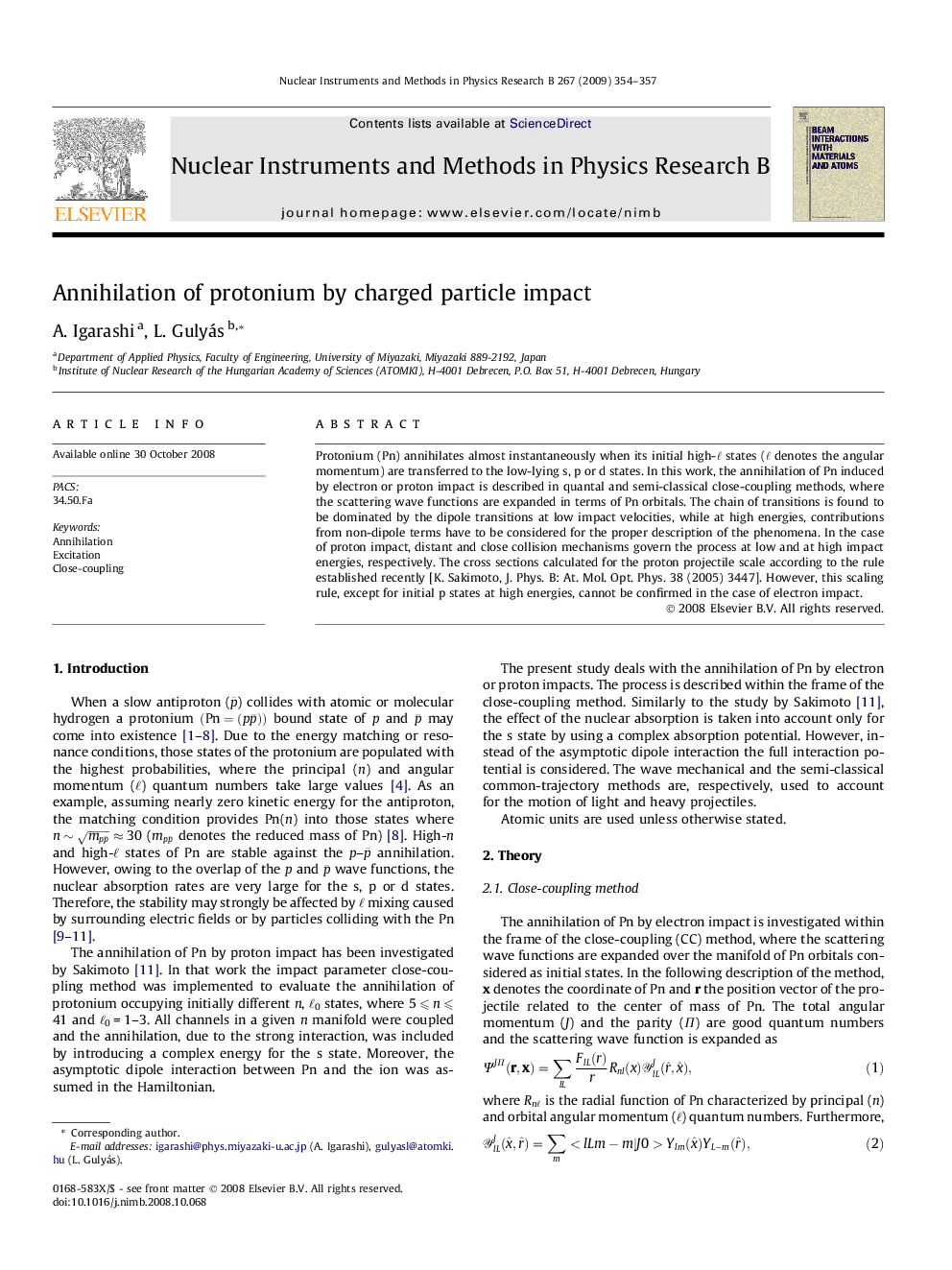| Article ID | Journal | Published Year | Pages | File Type |
|---|---|---|---|---|
| 1682728 | Nuclear Instruments and Methods in Physics Research Section B: Beam Interactions with Materials and Atoms | 2009 | 4 Pages |
Abstract
Protonium (Pn) annihilates almost instantaneously when its initial high-â states (â denotes the angular momentum) are transferred to the low-lying s, p or d states. In this work, the annihilation of Pn induced by electron or proton impact is described in quantal and semi-classical close-coupling methods, where the scattering wave functions are expanded in terms of Pn orbitals. The chain of transitions is found to be dominated by the dipole transitions at low impact velocities, while at high energies, contributions from non-dipole terms have to be considered for the proper description of the phenomena. In the case of proton impact, distant and close collision mechanisms govern the process at low and at high impact energies, respectively. The cross sections calculated for the proton projectile scale according to the rule established recently [K. Sakimoto, J. Phys. B: At. Mol. Opt. Phys. 38 (2005) 3447]. However, this scaling rule, except for initial p states at high energies, cannot be confirmed in the case of electron impact.
Related Topics
Physical Sciences and Engineering
Materials Science
Surfaces, Coatings and Films
Authors
A. Igarashi, L. Gulyás,
